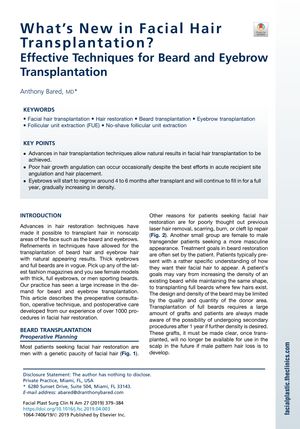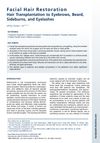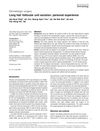What’s New in Facial Hair Transplantation?
July 2019
in “
Facial Plastic Surgery Clinics of North America
”

TLDR Facial hair transplantation has improved to give natural-looking beards and eyebrows with proper technique and patient care.
The document from August 2019 provides an overview of advancements in facial hair transplantation, with a focus on achieving natural results in beard and eyebrow transplants. It is based on over 1000 procedures and covers preoperative consultations, operative techniques, and postoperative care. Beard transplants are often sought due to genetic lack of facial hair, scarring, hair removal correction, or gender transition, with Follicular Unit Extraction (FUE) being the preferred method to avoid scarring and allow for varying graft densities. Postoperative care includes keeping the area dry and a timeline for shaving and hair regrowth. Eyebrow transplantation involves detailed preoperative planning for natural shape and density, using scalp hair as the donor. Techniques include strip harvesting and FUE, with careful insertion of grafts to mimic natural growth patterns. Complications such as asymmetry and poor angulation are addressed, with postoperative care including dryness, medication, and the potential for a second procedure. Hair regrowth is expected to begin at 4 to 6 months and continue for a year. The document concludes that with proper technique and patient collaboration, facial hair transplantation can yield natural and satisfying results.


